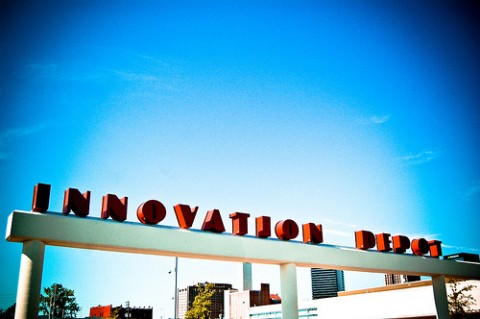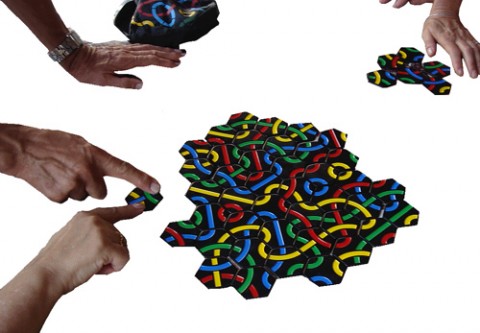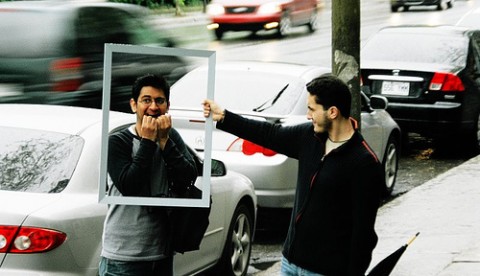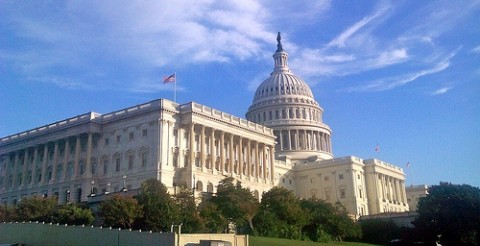Tag Archive: Collaboration
June 24, 2010
“Collaboration drives creativity because innovation emerges from a series of sparks – not a single flash of insight.”
– Keith Sawyer, Group Genius

|Photo by Chris Denbow|http://www.flickr.com/photos/mojodenbowsphotostudio/2408750389|
Having last week blogged about when we might want to de-emphasize innovation and think about the small steps we can take towards change, today I embrace the “i word.” In doing so, I tip my hat to Keith Sawyer and to my Interaction colleague Andy Atkins for helping to clarify my thinking around the connection between collaboration and innovation for social change. Both are obviously quite popular concepts at the moment, and there is some discussion about how well they go together. For example, one of my colleagues had a conversation with a corporate leader last week during which this leader shared his deep belief that collaboration inhibits creativity and that flashes of insight occur in the individual’s mind. While the last part of that statement may be true, what leads to that flash and where one goes with it would seem to have everything  to do with interaction with others.
to do with interaction with others.
Read More
June 10, 2010

There’s something about the word and notion of “sufficiency” that I love. Years ago, while living in France, I learned to enjoy the way the words “ça suffit” roll off the tongue. The term and idea resurfaced for me recently when I learned about the Third Annual Global Sufficiency Summit that was held here in Cambridge, MA in April. It has come up again while reading the newest book by Wayne Muller, whose writings were a helpful guide to me during my time in graduate school. Muller’s A Life of Being, Having, and Doing Enough focuses squarely on the question of how we go about determining what is sufficient in different areas of our lives. He suggests that our failure to consider or know how to address this question has contributed to putting us in individual and collective dire straits.
Read More
May 13, 2010

|Photo by Flowery *L*u*z*a*|http://www.flickr.com/photos/luchilu/747345256|
For the past few weeks, in a series of Thursday posts, we’ve addressed what it takes to tap the full potential of collaboration to shift to more environmentally sustainable ways of living and working. We’ve explored the importance of bringing diverse systemic perspectives together and developing shared identities and values as a way of achieving greater ecological intelligence and commitment. And as a friend of mine says, you can bring great groups together with the best of intentions and still end up with nothing or a mess. So what else can we put into place to help ensure we reach the sustainable ends we seek?
Read More
May 6, 2010

|Photo by jordigraells|http://www.flickr.com/photos/jordigraells/2097554407|
“In dealing with complex problems, our ability may be bounded, but our diversity is not. Diversity – be it based on identity, training or vocation — may be our best asset.”
– Scott E. Page
In last Thursday’s post, we talked about the importance of developing a shared identity among stakeholders, and doing this early in a collaborative process, as a way of developing greater commitment to collective interests as well as bolstering the inclination to think about and act in accordance with more long-term risks and benefits. Clearly more needs to be said about the WHO that is engaged in this work and how this aligns with sustainability.
Read More
April 29, 2010

|Photo by Peter Forbes|http://www.wholecommunities.org/programs/|
“To work at this work alone is to fail.”
-Wendell Berry
Picking up from where I left off last Thursday . . . How might collaboration be a key to making the sustainability shift? At its best, collaboration is the act of modeling complex systems at work, and with awareness and intention comes critical adaptive capacity. The goal is to achieve collective and distributed intelligence that can respond in timely ways to threats to sustainability (stressed ecosystems, injustice, etc.) and that can be proactive in creating optimal conditions for future generations to meet their needs. That’s the ideal, right? How do we get there?
Read More
April 21, 2010

|Photo by Great Beyond|http://www.flickr.com/photos/tonyjcase/2759363747/|
A few years ago, I researched and wrote a masters’ thesis on addressing power dynamics in collaborative process design and facilitation.? I was doing the study based on great questions raised over the years by Cyndi Suarez (Co-Director of Northeast Action) – and with the belief that if power dynamics are not well understood and addressed, group process facilitators are likely to unknowingly reinforce the status quo – a scary thought for those of us working on social justice and social change!
Read More
April 21, 2010

|Photo by Great Beyond|http://www.flickr.com/photos/tonyjcase/2759363747/|
A few years ago, I researched and wrote a masters’ thesis on addressing power dynamics in collaborative process design and facilitation.? I was doing the study based on great questions raised over the years by Cyndi Suarez (Co-Director of Northeast Action) – and with the belief that if power dynamics are not well understood and addressed, group process facilitators are likely to unknowingly reinforce the status quo – a scary thought for those of us working on social justice and social change!
Read More
April 10, 2010
Friends — I am asking you to help build my capacity to build our capacity to create the change we seek…. from the grassroots to the grasstops, and every village and hamlet in between. Last week, I received an invitation to participate in a meeting in a few weeks on the federal government’s nonprofit capacity building efforts — at the White House! Read More
April 8, 2010

|Photo by xb3|http://www.flickr.com/photos/bofh/150722915|
In a post of a few weeks ago I explored the different dimensions of social space we might be called to attend to as leaders and change agents in creating environments for people to collaborate. I suggested that these dimensions exist in dynamic tension and together form a holistic picture of how we can leverage the potential of groups by respecting the values of autonomy, community, and divinity. In recently reading a book by Tim Kasser and Tom Crompton, I was reminded that how we frame these dimensions matters in terms of what ends we seek and ultimately serve.
Read More
April 1, 2010

|Photo by futureshape|http://www.flickr.com/photos/futureshape/2037704163|
(In the spirit of April Fool’s)
A town is hit by a fire that catches in the church district one evening. As the fire spreads, so does word among the members of the neighboring congregations. Before long, people have assembled in front of their respective houses of worship and are deciding what to rescue from inside. A roving reporter goes from group to group to see how they’re responding. She notes that the Catholics have already salvaged the communion cup. Moving to the Episcopal Church, she witnesses a man emerging from smoke to cheers as he hoists the Book of Common Prayer. The reporter heads next to the Unitarians, and as she approaches cannot see a particular object among the group assembled in the street. Observing the expressions on peoples’ faces, she becomes alarmed that someone may still be inside the church, which is on the verge of collapsing. As she gets closer she hears the group in heated debate about who should be on the ad hoc committee to make the final decision about what to rescue . . .
Read More
March 23, 2010

|Photo by Kevin Dooley|http://www.flickr.com/photos/pagedooley/4046734044/|
If you have been paying any attention to the national political scene, you know that in these days of no compromise everything seems to balance on the mathematics of the US Senate. Given the latest equation, it was no small deal to learn that Senator Evan Bayh will not be running for re-election. About a month ago he wrote a New York Times opinion piece that has been on my mind since then – Why I’m Leaving the Senate.
The piece is worth reading in full, but here is the part that inspired this post:
Any improvement must begin by changing the personal chemistry among senators. More interaction in a non-adversarial atmosphere would help… It shouldn’t take a constitutional crisis or an attack on the nation to create honest dialogue in the Senate. Let’s start with a simple proposal: why not have a monthly lunch of all 100 senators?
Read More
February 25, 2010
I want to thank Susan Wright of Wright Momentum for spurring on this post, which is in essence a response to a thoughtful dialogue we have had going for a few months. My thoughts here are further inspired by a training my colleague Melinda and I did at the historic Penn Center on St. Helena’s Island in South Carolina, a site where the first school was built in the US to educate freed slaves. It was also an important site for people to come together across racial lines to do strategy work during the Civil Rights movement. Melinda and I had the good fortune to spend three days with the amazing Gulf Coast Fellows, a diverse group of grassroots leaders from Louisiana, Alabama, Mississippi, and Texas. Our time with the Fellows affirmed for me the strategic direction IISC has recently adopted. Specifically, in considering the next three years (2010-2012), our IISC”s staff has collectively committed to concentrating more of our efforts around: (1) helping to build power and collaborative muscle at the grassroots, and (2) supporting social change work that bridges sectors and organizations (including building networks).
Read More
 to do with interaction with others.
to do with interaction with others.








